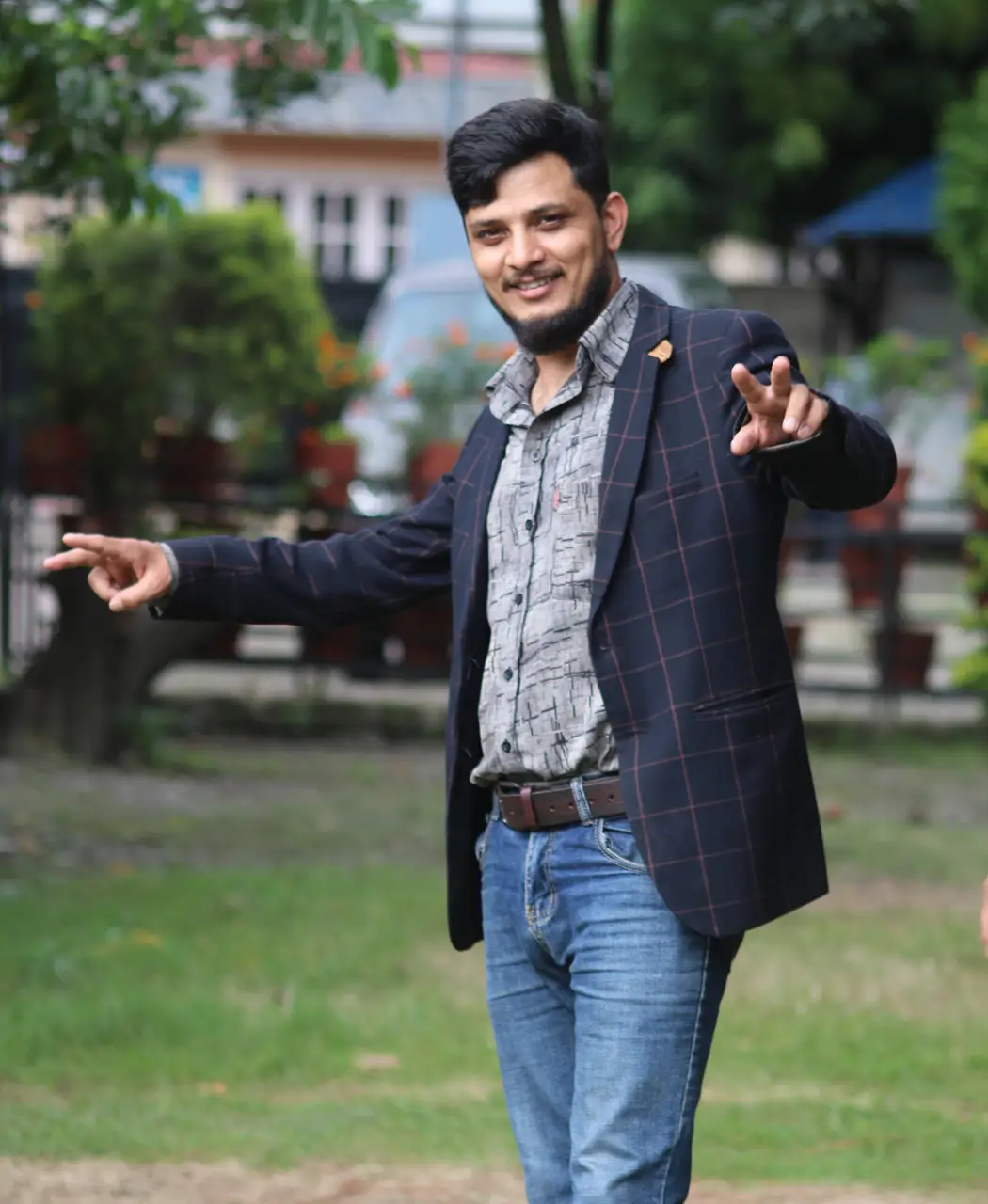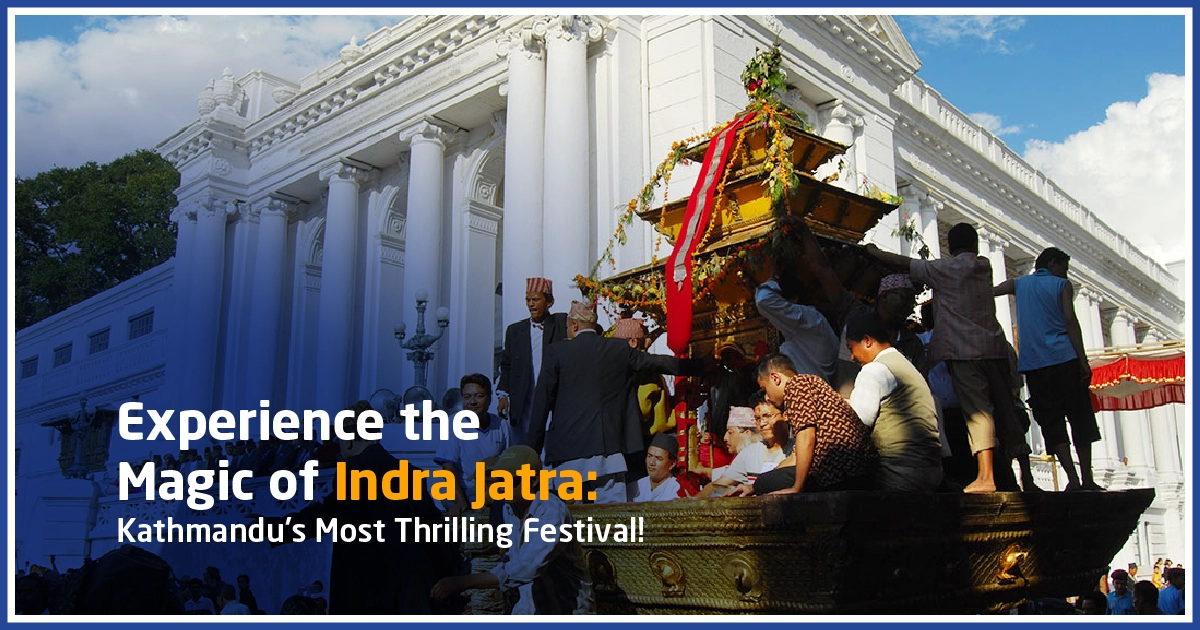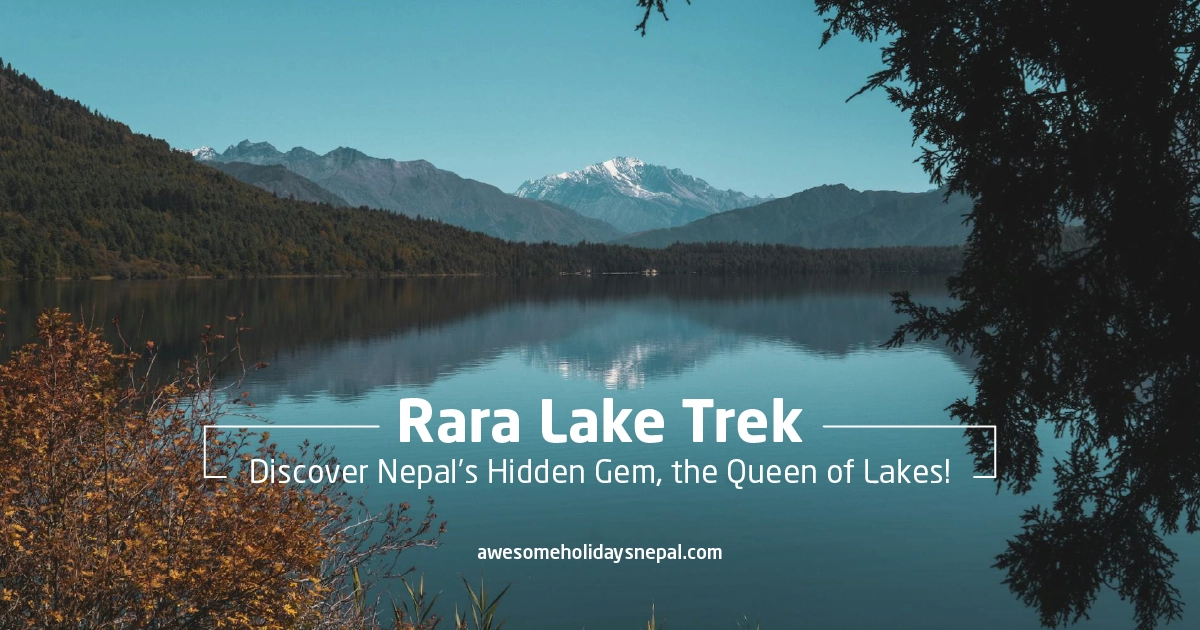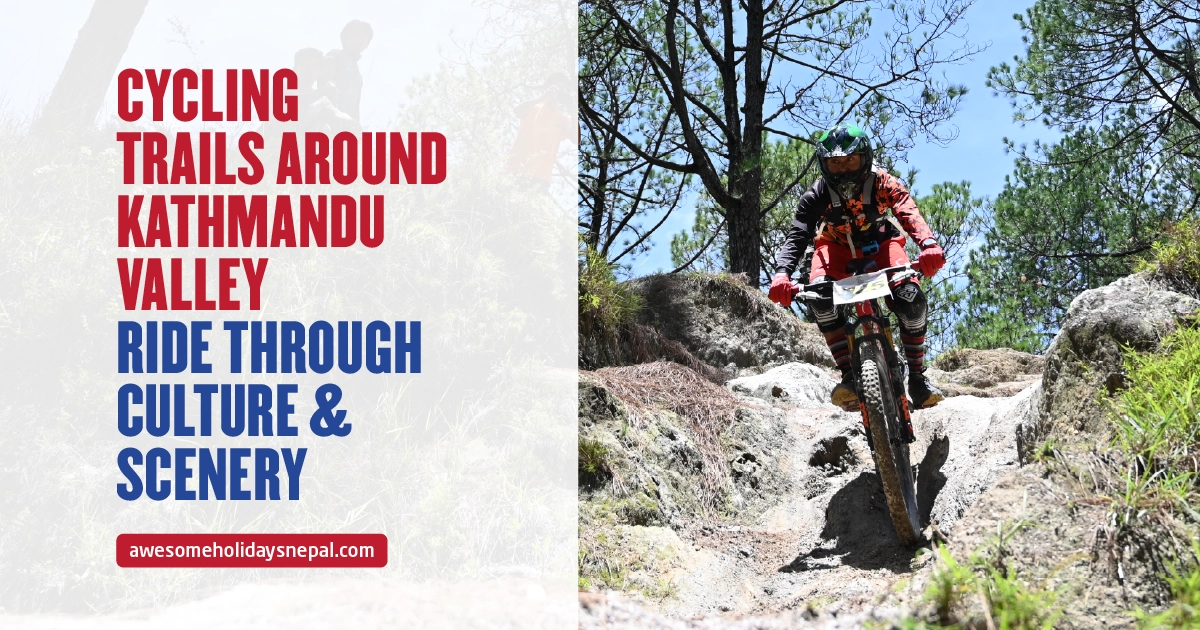Top 8 Easy Treks in Nepal
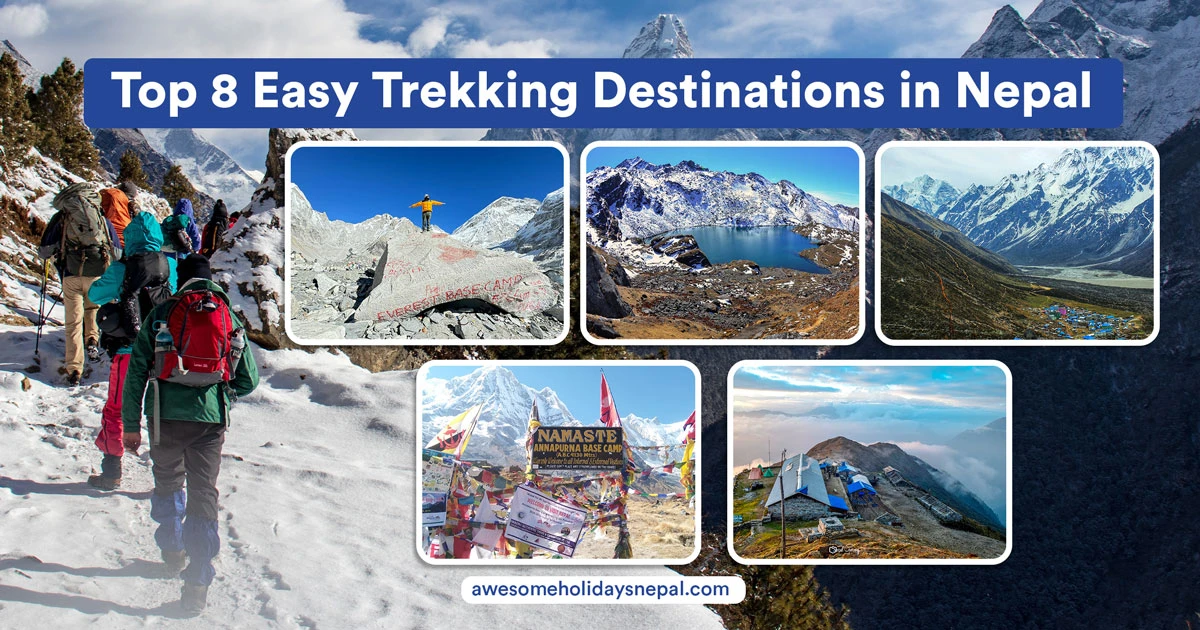
Treks in Nepal are a popular tourist activity among national and international tourists for various reasons. Along with the amazing experience of walking into the wild, the options of challenging and easy treks in Nepal are the reason.
Trekking in the Himalayas of Nepal wasn’t always this easy. Lack of proper food and accommodation services and not-so-well-demarcated trails used to be a bigger problem. During the trek, different facilities were provided, like a team of cooks, sherpas, guides, and porters, as well as tents for dining, sleeping, and toileting.
But with the establishment of teahouses on the trekking routes, trekking has become hassle-free and much easier for both operators and trekkers. The majestic Himalayas of Nepal include the top 8 highest peaks out of 14 and provide a wide range of ups and downs with some of the best trekking routes in the world.
These trekking routes take us to the lakes, rivers, hills, and mountains above 5,000 m above sea level. Mountains, hills, monuments, valleys, pathways, traditional villages, and sparkling scenery on the way are the characteristics of trekking in Nepal.
In this blog, we will briefly discuss the eight easy treks in Nepal.
1. Annapurna Sanctuary/Annapurna Base Camp
Annapurna Base Camp Trek is one of the Easy Treks in Nepal, any age group can accomplish it. This trek does not require any special equipment or any special physique. The ease of this trekking route attracts trekkers from all around the globe.
Starting from Jhinu Dada, right after crossing the Jhinu Bridge, ABC’s journey takes you through paved stairs and roads. Passing through stops like Chhomrong, Lower Sinuwa, Upper Sinuwa, Bamboo, Dovan, Himalaya, and Machhapuchre Base Camp, the trek takes you to the Annapurna Base Camp. From here, you can enjoy the panoramic view of Annapurna, Annapurna South, Himchuli, Singu Chuli, Tharpu Chuli, and Machhapuchhre.
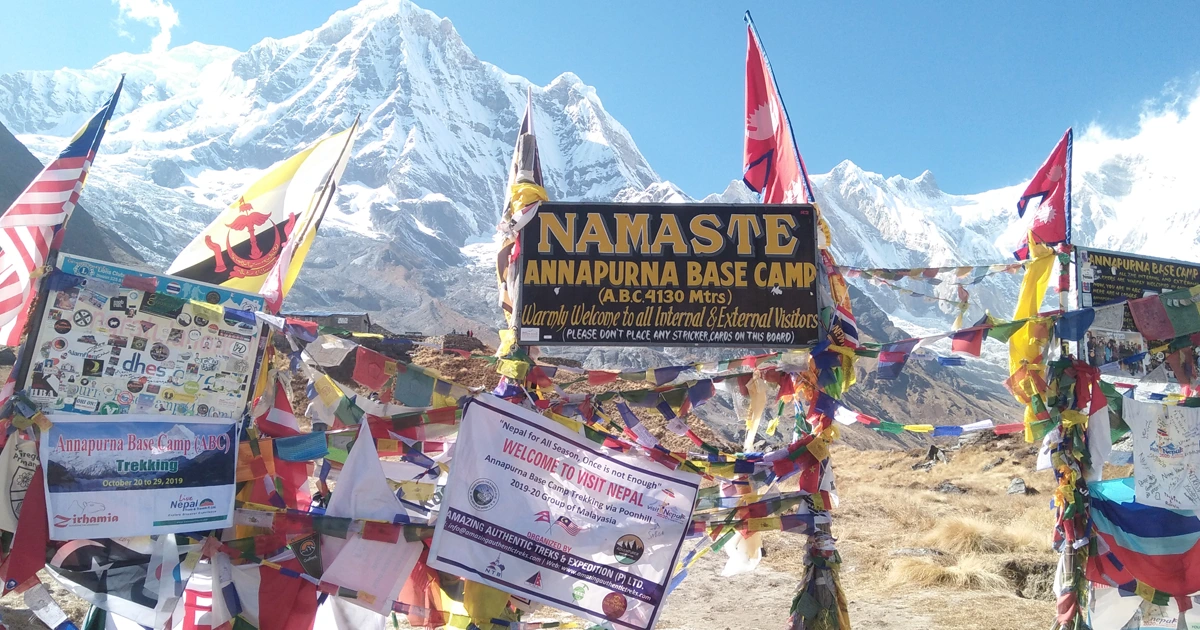
ABC trails meander through lush forests adorned with rhododendrons and other orchids. The experience of walking into the woods, vibrant with blooming rhododendrons during the spring season, is beyond the planet.
This trek can be completed within 7 to 10 days, depending on one’s endurance and the ups and downs of the terrain. In addition, one can add a unique opportunity to experience the rich culture, traditions, and lifestyle of the Gurung and Magar communities in places like Ghandruk.
2. Everest Base Camp Trek
Among the easy treks in Nepal, the base camp to the highest mountain in the world, you would most likely expect the Everest Base Camp trek to be complicated. But no! It is one of the accessible trek destinations despite being located high in the Himalayas of the Khumbu region at an altitude of 5364 meters.
The Everest Base Camp trek is a journey to one of the world’s most iconic destinations. It brings adventurers up close to the highest peak on Earth, Chomolungma, or Mount Everest. This trek blends the Himalayan vista, rich Tibetan and Sherpa culture, monasteries, and rugged terrain. The Khumbu region is home to the Sherpa people, who have lived at the base of the high Himalayas for centuries. Their rich culture, tradition, lifestyle, and endurance of the cold are what make them special.
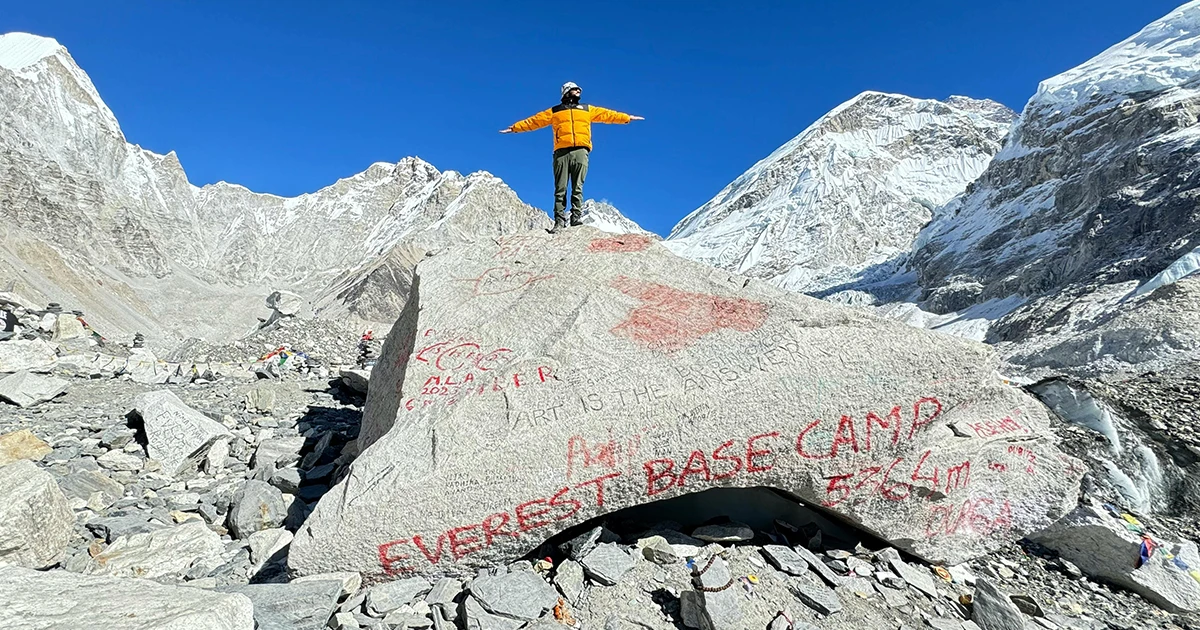
Your journey to EBC starts from Kathmandu with a scenic flight from TIA to Lukla. However, in peak climbing seasons, you might need to take the flight from Ramechhap, a city just 5-6 hours’ drive away from the capital.
After getting off the plane, our trek starts. We will reach the bustling villages of Phakding and Namche Bazaar, a town blended with modern infrastructure and ancient traditions. Walking along the riverbanks of Dudh Koshi, crossing the iconic suspension bridge, and acclimatizing in traditional villages, we will reach the Everest Base Camp. Since we will be gaining height, we might need to acclimate to adjust our bodies to the decreasing amount of oxygen in the atmosphere.
The awe-inspiring panoramas of Everest and its neighboring giants and the picturesque scenery of the Khumbu region make it a must-experience trek for every traveler.
3. Ghorepani Ghandruk Trek—Poon Hill Trek
This is another famous short trek of the Annapurna Conservation Area. The Ghorepani Ghandruk Trek is a unique trekking experience that offers magnificent views of some of the highest and most beautiful mountains in the world, including Mount Annapurna and Mount Machhapuchre.
This trek is relatively more straightforward and suitable for those looking for a shorter trekking exploration in the Annapurna region. It is also ideal for beginners. Hiking through villages, farmland, and forests without the risk of getting lost when you are trekking with an authorized trekking guide.

The Ghorepani Ghandruk route also passes through traditional Gurung and Magar villages, homestays, and dense rhododendron forests that blossom during the spring. Ghandruk is a charming village known for its stunning mountain views, rich culture, and scenic landscapes. It is popularly known for the homestays operated by the local Gurung community.
Visitors can also explore local traditions and handicrafts, and experience traditional Gurung cuisine and hospitality. The entire trekking route is stone-paved, and one can see traditional houses and ancient monasteries that create a warm, inviting atmosphere, making it a peaceful getaway for both trekkers and cultural enthusiasts.
4. Gosainkunda Trekking.
The short trek to the Gosaikunda Lake is furnished for those with a tight schedule who want to do a classic mountain trek within the alpine zone and experience the Himalayas. The Gosaikunda Lake lies in the Langtang area and is the originating point of the Trishuli River.
Trekking in the Langtang area offers spectacular views of the Ganesh Himal, Manaslu, and Langtang ranges. Along the path to Gosaikunda, one can see rhododendron and pine forests, which are rich in wild flora and fauna. The visit to the monastery and the famous yak cheese factory of Chandan Bari makes the walk memorable.
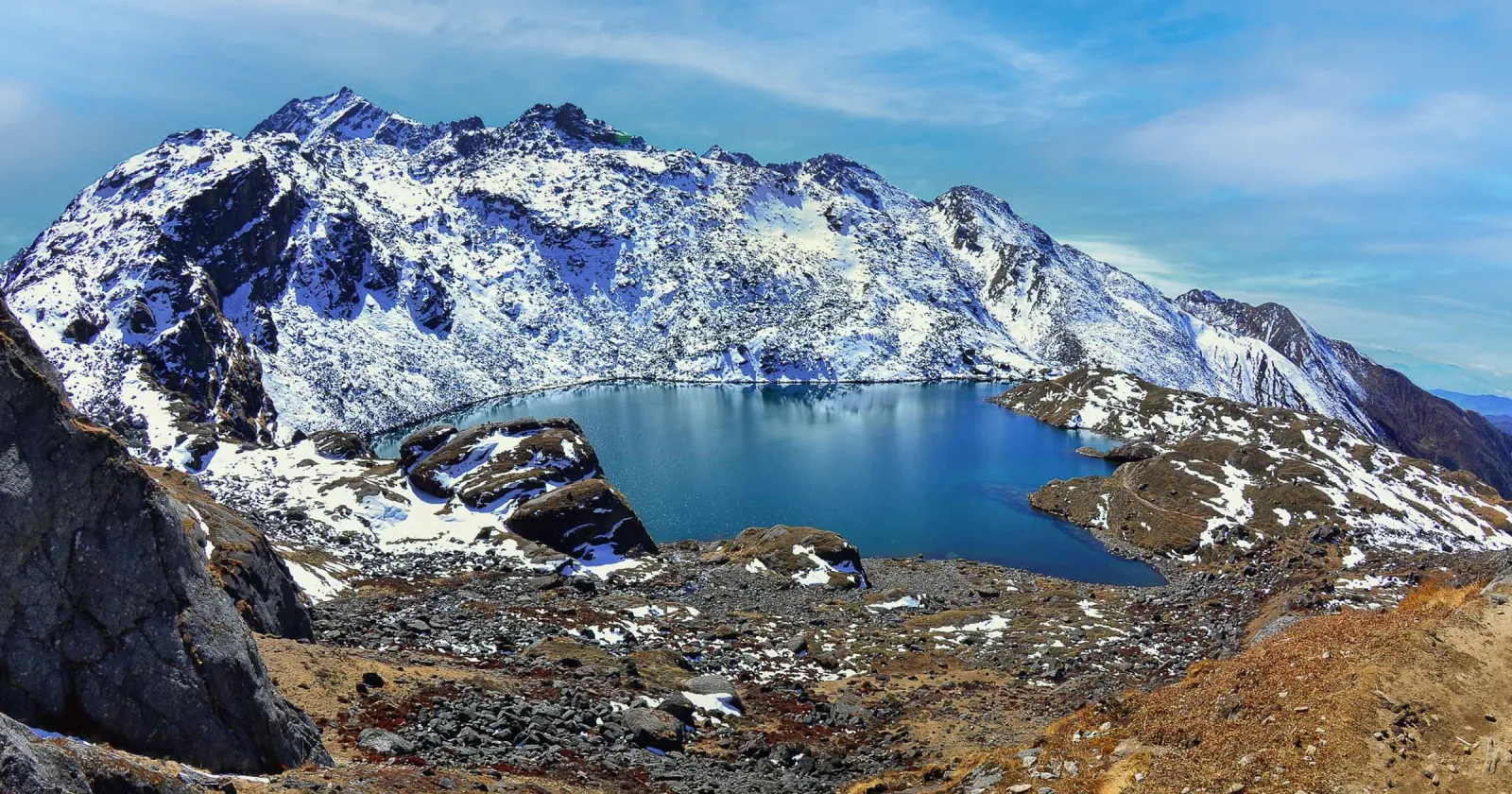
Trekking to Gosaikunda requires an extraordinary ability to walk on rugged terrain. It is not advised to go to this site if you are new to trekking or have asthma. Walking uphill and downhill for 5 to 6 hours daily with your baggage is difficult. The trek from Chandan Bari to the Gosainkunda Trek Route is comparatively more challenging.
Walking through Lauribina, we will reach Saraswati Kunda, Bhairav Kunda, and the Mighty Lake Gosaikunda. Take a tour, click some memories, and spend the night at a tea house. This short Gosaikunda trek offers tea house accommodation, so you don’t need to bring much gear or sleeping bags.
5. Helambu Trekking
The Helambu Trek is an excellent choice for travelers looking to experience authentic trekking just outside Kathmandu in a short period. This trek will take you to one of the most charming villages with an unbelievable natural backdrop.
Over a few days, we will navigate the villages of Chisapani, Thadepatti, and Shermathang, each offering a unique view of the locals. When the sky is clear, we can observe significant peaks like Mt. Annapurna, Mt. Manaslu, Ganesh Himal, Langtang Himal, Dorje Lakpa, and the revered Mt. Gaurishankar.
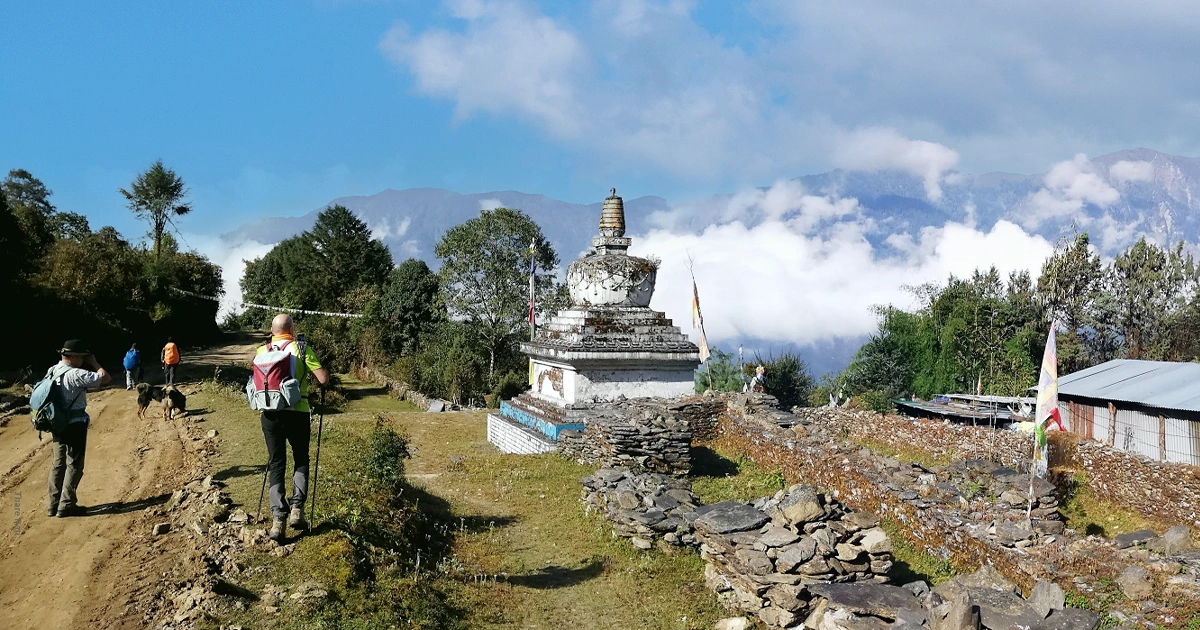
Passing through two national parks, Shivapuri National Park and Langtang National Park, allows one to immerse oneself in pristine forests filled with rhododendrons, oak trees, and a variety of wildlife. The traditional Buddhist customs and practices can be experienced in Tamang and Sherpa villages along the way.
For adventure-seeking travelers, the Helambu Trek with the Langtang Valley trek via Gosaikunda Lake adds a touch of adventure. Helambu villages lie at a lower altitude, making it ideal and accessible all around the year and accessible for amateur trekkers.
6. Kathmandu Valley Rim
The Kathmandu Valley Rim Trek is an ideal choice for beginners without a high-skill trekking experience or who do not want high-altitude acclimatization. It is an excellent option for short and easy treks in Nepal, with rewarding adventure near Kathmandu. This trekking trip is designed for those who have a week or less to roam around Kathmandu. The Shivapuri National Park is the nearest national park to Kathmandu, which includes some part of the Kathmandu Valley Rim.
A relaxed stroll through the vicinity offers ample opportunities to connect with local communities, experience their village life, and learn about their culture and lifestyle. Panoramic views of the Himalayas, including famous peaks like Langtang, Annapurna, and Ganesh, are breathtaking. Clear days may reveal distant glimpses of Everest. This serene trekking path provides cultural immersion for the community and the ethnic people around the valley.
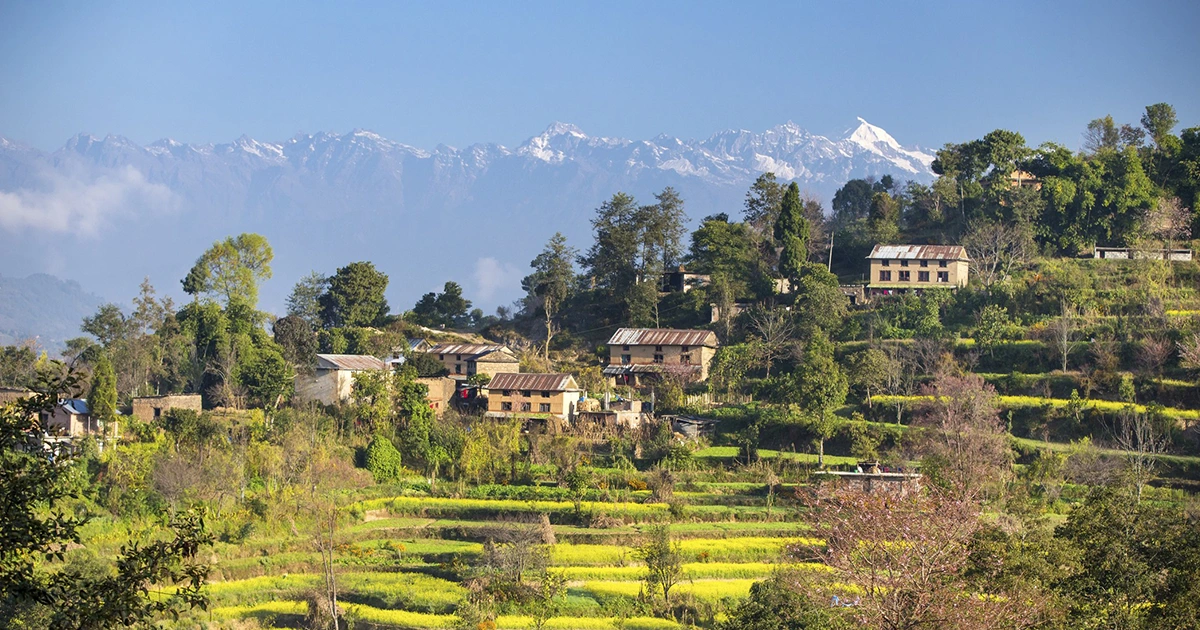
This trek is commonly known as Chisapani Nagarkot Hiking. Mountaineers also prefer this trek as training for more challenging treks like the Everest Base Camp Trek, Manaslu Circuit Trek, or Kanchenjunga Trek. The diverse landscapes of the forest route, including farmlands and traditional villages, make it special as a special short trekking route.
Early in the morning, we drive about one hour to Sundarijal and start the trek to Chisapani. The trek starts with a steep climb through the rhododendron forest of Chisapani and passes through the Tamang villages. Then, we reach Nagarkot, a small hill town rich in natural landscape. Our trek continues to Dhulikhel.
Descending through rhododendron woods, we reach the ancient town of Dhulikhel, which is rich in Newari culture. We will have our dinner and stay overnight at a resort in Dhulikhel. The next day, we will visit Namo Buddha, a place of great spiritual significance and home to one of the most sacred Buddhist sites in the Kathmandu Valley, alongside Swayambhu and Boudha.
After plunging into the calmness of Namobuddha, the trek proceeds to Balthali, a beautiful village with lush landscapes and traditional charm. This will be the last spot of our journey, from where we drive back to Kathmandu, wrapping up an unforgettable trekking experience.
7. Khopra Hill Trek
Another moderate trek that can be completed in a short period is the Khopra Hill Trek, also known as the Khopra Ridge Trek. Its maximum height is 4500 m above sea level and lies in the Myagdi District of Nepal. This newly introduced trek offers a panoramic view of the peaks of the Annapurna range: Mt. Dhaulagiri (8,167m), Annapurna South(7219m), and Mount. Nilgiri (7,061m), Bhara Shikhar (7,647m), Annapurna I (8,091m), Mount Machhapuchre (6,997m), and other smaller peaks.
Driving to Nayapul from Pokhara and trekking towards Tadapani through Ghandruk, we pass through the Rhododendron Forest, pine, oak, and other trees, with bamboo bushes. We experience different Gurung and Magar settlements and their lifestyles. This trip is suitable for trekkers of all ages and health.

Many consider the Khopra Danda Trek more accessible than the Annapurna Base Camp trek and believe it is possible throughout the year. We see a pristine Khayar lake and trees at the Khopra Danda. The closer views of Annapurna South, Dhaulagiri, and other neighboring peaks are mesmerizing.
March, April, and May in the spring season can be the best time to trek this region, as the sky is clear and we can see blooming rhododendrons and other orchids. Another autumn season in September, October, and November is highly recommended for open views of Himalayan panoramas.
8. Langtang Valley Trek
This is another short trek in the Langtang area that starts from Syabrubesi. This trek takes you through the ‘Valley of Glaciers.’ Only 123 km away from the capital city of Nepal, this trek allows you to discover the unique culture and pristine natural hills, glaciers, and the Himalayas.

It’s a 6-hour drive to Syabrubesi, and our trek starts. The trek takes us through stops like Bamboo, Lama Hotel, Ghoda Tabela, Khangsher, Langtang Village, Mundo Village, and Kyanjin Gompa before we finally get back to Syabrubesi to summarize the short Langtang Valley Trek.
The Climb to Tserko Ri provides stunning scenic views of mountains like Langtang, Langsisa, and Ganjala Peak. Other attractions include spectacular views of Dorje Lakpa (6,990m / 22,933 ft), Langtang Ri (6,370m / 20,898 ft), and Langtang Lirung (7,245m / 23,769 ft).
Walk through spectacular rhododendron, oak, and pine forests full of flora and fauna, including red pandas (Ailurus fulgens), snow leopards, musk deer, and more than 250 types of birds, both native and migratory. The trail takes you to a height of 4,000 m. The ancient monastery of Kyanjin Gompa, situated near Tserko, upholds the Buddhist culture followed by the Tamang and Sherpa communities.
The Langtang Valley Trail is an extremely beautiful, fascinating, and popular destination in Nepal. Do not forget to visit the yak pastures and local cheese factories!
Why these Easy Treks in Nepal?
1. Well-established Trails
The above-mentioned trekking routes are popular, with well-defined, maintained trails. Most of the trails are stone-paved and facilitated by signs and arrows. Trekking companies, local communities, and stakeholders maintain these trails promptly, making the route navigable, easy, and safe.
2. Accommodation and amenities
These trekking routes have well-maintained lodges, guest houses, and teahouses providing food and accommodation, including internet facilities like Wi-Fi. Trekkers can carry light supplies like tents and sleeping bags, reducing the cost and physical exhaustion.
3. Moderate Altitudes
Every trekker has a fear of altitude sickness during a trek. Most of these trekking destinations stay within moderate altitudes and allow for gradual acclimatization, making the altitude more enjoyable and memorable.
4. Shorter Duration
Compared to peak climbing and trekking, including high passes, these treks are relatively shorter, ranging from a few days to about two weeks.
5. Accessible
Most of these treks start near major cities or towns with the ability to drive or fly. There is no need for extensive travel to remote areas, which reduces logistical challenges. In case of emergency, there is always an option for a helicopter rescue.
6. Guided Tour Availability
These popular trekking guided routes often provide support, like experienced trekking guides, porters, and emergency aid.
7. Suitable for naive trekkers
Most of these treks do not require technical climbing skills or heavy equipment. With minimal exposure to high-risk sections like steep rock faces, glaciers, or avalanche-prone areas, they are safe for beginners and families.
Meta Description:
Explore Nepal’s majestic mountains, vibrant cultures, and scenic landscapes with easy trekking options for all skill levels. Read the blog to find more on easy treks in Nepal.
FAQs
Expand AllWhat are the best beginner treks in Nepal?
Nepal offers several beginner-friendly treks, such as the Annapurna Base Camp Trek, Ghorepani Poon Hill Trek, Langtang Valley Trek, Kathmandu Valley Rim Trek, and the Everest View Trek. These treks are accessible, shorter in duration, and require no prior trekking experience.
How long does a beginner trek in Nepal usually take?
Beginner treks in Nepal typically last 3 to 10 days. Shorter treks, like the Kathmandu Valley Rim Trek, take 3-5 days, while others, like the Annapurna Base Camp or Langtang Valley Trek, can take 7-10 days, depending on your pace and strength.
Do I need a guide for beginner treks in Nepal?
While many beginner treks can be done without a guide, hiring one is recommended, especially for those unfamiliar with the region. Guides provide valuable cultural insights and navigation support and can enhance safety and the overall experience.
What is the best time of year for a beginner trek in Nepal?
The best times are during spring (March-May) and autumn (September-November). These seasons offer clear skies, moderate temperatures, and excellent visibility of mountain views. However, some lower-altitude treks, like those around Kathmandu Valley, are accessible year-round.
Is it safe to trek as a beginner in Nepal?
The trekking trails are generally safe, with well-marked trails and established teahouses along the routes. However, proper acclimatization, following safety guidelines, and preparation for altitude changes on higher treks are essential.
Related blog posts
Discover a choice of tourist destinations loved by most of our visitors. Whether you're on a jungle safari to spot rare animals or walking through a world heritage site, these well-planned itineraries cover the major highlights of Nepal.

